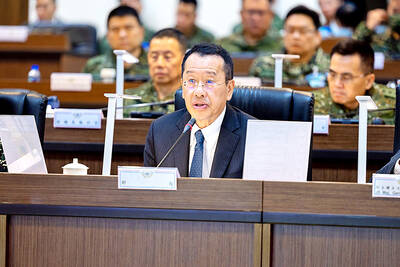Asian currencies, led by South Korea’s won, declined this week after a rally in regional stocks faltered on signs the global recession is far from easing.
The Bloomberg-JPMorgan Asia Dollar Index, which tracks the region’s 10 most-active currencies excluding the yen, fell this week for the first time in a month and the MSCI Asia-Pacific Index of shares snapped a two-week rally. Europe’s economy contracted at the fastest pace in at least 13 years in the first quarter, while state-run Korea Development Institute expects the South Korean economy will shrink 2.3 percent this year, the first time in more than a decade.
“The correction we’ve seen in global equities this week probably hasn’t finished yet,” said Dariusz Kowalczyk, a strategist with SJS Markets Ltd in Hong Kong. “There’s room for further risk aversion, which would be negative for Asian emerging currencies.”
The won, Asia’s best-performing currency in the past month, declined 0.8 percent this week to 1,257 per dollar in Seoul. The Philippine peso weakened 0.8 percent to 47.635, while the Malaysian ringgit fell 0.9 percent to 3.5495.
Indonesia, Southeast Asia’s biggest economy, expanded 4.4 percent last quarter, the slowest pace in five years, the government reported on Friday. Singapore’s economy shrank the most since at least 1975 in the same quarter and Thai Finance Minister Korn Chatikavanij estimated a “pretty bloody” GDP contraction of as much as 6 percent in the same period.
The peso ended a two-week rally on speculation oil companies are purchasing dollars to pay for imports.
The New Taiwan dollar completed a fourth winning week on speculation warming relations with China will draw investment and help pull the economy out of a recession.
The currency’s gains were tempered as global funds sold US$1.1 billion more local shares than they bought this week. The benchmark TAIEX index of stocks fell 1.4 percent for the week, ending a three-week rally.
“The structural dynamics remain good for Taiwan’s dollar,” said Wai Ho Leong, a regional economist at Barclays Capital PLC in Singapore, citing prospects that Asia will lead the global economic recovery.
The selling of Taiwanese shares is likely to be temporary, he said.
The NT rose 0.3 percent this week to NT$32.950 against the US currency, according to Taipei Forex Inc. It touched NT$32.767 on Wednesday, the strongest level since Dec. 31.
Elsewhere, the Indonesian rupiah declined 0.6 percent this week to 10,438 a dollar, while Thailand’s baht jumped 0.9 percent to 34.56. China’s yuan traded at 6.8258 versus 6.8218 last Friday, while Singapore’s dollar was at S$1.4668, compared with S$1.4659.
The euro fell against the US dollar and extended a weekly loss versus the yen as the economy of the 16-nation region contracted the most in at least 13 years, raising concern the pace of recovery will be slow.
The yen extended its weekly rally against counterparts including the South African rand and Norwegian krone as a drop in stocks discouraged investors from buying higher-yielding assets funded in Japan’s currency. The euro posted its first weekly decline versus the US dollar in a month as GDP in the region shrank.
The euro slid 1.1 percent to US$1.3488 at 4:30pm in New York, from US$1.3639 on Thursday, and posted a weekly decrease of 1.1 percent. The euro lost 1.9 percent to ¥128.23 from ¥130.67 for a 4.5 percent decline this week. The US dollar dropped 0.8 percent to ¥95.07 from ¥95.80, extending its reduction this week to 3.4 percent, the biggest since October.

STILL COMMITTED: The US opposes any forced change to the ‘status quo’ in the Strait, but also does not seek conflict, US Secretary of State Marco Rubio said US President Donald Trump’s administration released US$5.3 billion in previously frozen foreign aid, including US$870 million in security exemptions for programs in Taiwan, a list of exemptions reviewed by Reuters showed. Trump ordered a 90-day pause on foreign aid shortly after taking office on Jan. 20, halting funding for everything from programs that fight starvation and deadly diseases to providing shelters for millions of displaced people across the globe. US Secretary of State Marco Rubio, who has said that all foreign assistance must align with Trump’s “America First” priorities, issued waivers late last month on military aid to Israel and Egypt, the

France’s nuclear-powered aircraft carrier and accompanying warships were in the Philippines yesterday after holding combat drills with Philippine forces in the disputed South China Sea in a show of firepower that would likely antagonize China. The Charles de Gaulle on Friday docked at Subic Bay, a former US naval base northwest of Manila, for a break after more than two months of deployment in the Indo-Pacific region. The French carrier engaged with security allies for contingency readiness and to promote regional security, including with Philippine forces, navy ships and fighter jets. They held anti-submarine warfare drills and aerial combat training on Friday in

COMBAT READINESS: The military is reviewing weaponry, personnel resources, and mobilization and recovery forces to adjust defense strategies, the defense minister said The military has released a photograph of Minister of National Defense Wellington Koo (顧立雄) appearing to sit beside a US general during the annual Han Kuang military exercises on Friday last week in a historic first. In the photo, Koo, who was presiding over the drills with high-level officers, appears to be sitting next to US Marine Corps Major General Jay Bargeron, the director of strategic planning and policy of the US Indo-Pacific Command, although only Bargeron’s name tag is visible in the seat as “J5 Maj General.” It is the first time the military has released a photo of an active

CHANGE OF MIND: The Chinese crew at first showed a willingness to cooperate, but later regretted that when the ship arrived at the port and refused to enter Togolese Republic-registered Chinese freighter Hong Tai (宏泰號) and its crew have been detained on suspicion of deliberately damaging a submarine cable connecting Taiwan proper and Penghu County, the Coast Guard Administration said in a statement yesterday. The case would be subject to a “national security-level investigation” by the Tainan District Prosecutors’ Office, it added. The administration said that it had been monitoring the ship since 7:10pm on Saturday when it appeared to be loitering in waters about 6 nautical miles (11km) northwest of Tainan’s Chiang Chun Fishing Port, adding that the ship’s location was about 0.5 nautical miles north of the No.